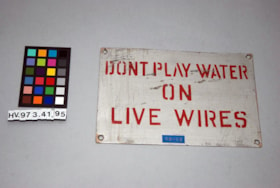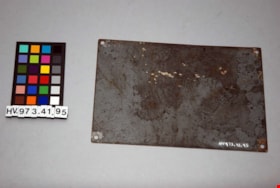Narrow Results By
automobile lock
https://search.heritageburnaby.ca/link/museumartifact79114
- Repository
- Burnaby Village Museum
- Accession Code
- BV007.4.2
- Description
- Metal car lock with plack on the side; "THIS CAR IS PROTECTED BY THE/ SECURITY AUTO-THEFT SIGNAL SYSTEM/ $100 REWARD/ FOR ARREST AND CONVICTION/ FOR GRAND LARCENY, OF ANY PERSON/ OPERATING THIS CAR, OR TAMPERING/ WITH THE SIGNAL/ SECURITY MANUFACTURING COMPANY/ MANUFACTURERS/ SUCCESSORS TO MILLER-CHAPMAN COMPANY/ PATENTED AUG. 25/1914 OTHER PATENTS PENDING - LOS ANGELES CALIFORNIA."
basket
https://search.heritageburnaby.ca/link/museumartifact50308
- Repository
- Burnaby Village Museum
- Accession Code
- BV006.24.5
- Description
- The basket is round with a lid and has a geometric design in black. Made using the coiled method.
- Object History
- Resembles California and Southwestern style baskets made of willow, dye and grass.
- Country Made
- United States of America
- Province Made
- California
Images
Documents
basket lid
https://search.heritageburnaby.ca/link/museumartifact50309
- Repository
- Burnaby Village Museum
- Accession Code
- BV006.24.6
- Description
- The basket is round with a lid and has a geometric design in black. Made using the coiled method.
- Object History
- Resembles California and Southwestern style baskets made of willow, dye and grass.
Images
Documents
box
https://search.heritageburnaby.ca/link/museumartifact24043
- Repository
- Burnaby Village Museum
- Accession Code
- HV975.5.535
- Description
- Box, pink with white flowers; lid has brown label on bottom; "Lum Jok Pills".
- Object History
- This item originates from the Chinese Herbalist Store "Way Sang Yuen Wat Kee & Co.", Victoria B.C.
- Classification
- Container
- Marks/Labels
- English translation adjusted to white turbidity pills. The characters literally translate to: company, issue, old Chinatown in San Francisco, five, drench, white, turbid, pill; take twice daily morning and evening, take three mace each time, take with tea, it is appropriate to eliminate the consumption of tobacco, alcohol, and food that is fatty or with dry-heat). This medicine is located in San Francisco Chinatown. English packaging label: Ng Lum Jok Pills. Net weight 1/4 lb. Chinese Herb Compound Pills. A liver tonic and for constipation. Their action assists the natural circulation of the blood. Directions - Take a dose of 3 drs. 2 or 3 times daily. Made in the U.S.A. by Kay Sang Herb Company. 843 Clay Street, San Francisco, California, U.S.A. This product is used to treat gonorrhea, and whittish/cloudy urine. It is made of a variety of ingredients and is used to treat discharge, warmth in the bladder, unclear urine, and nocturnal emission. It reduces inflammation and pain. The manufacturer recommends that the product not be taken with tobacco, alcohol, fatty foods, or with dry-heat.
- Measurements
- 4.5 cm in height x 8 cm in width
- Maker
- Kay Sang Herb Company
- Country Made
- United States of America
- Province Made
- California
- Site/City Made
- San Francisco
Images
California quail
https://search.heritageburnaby.ca/link/archivedescription82748
- Repository
- City of Burnaby Archives
- Date
- [1956]
- Collection/Fonds
- Hazel Simnett collection
- Description Level
- Item
- Physical Description
- 1 painting : colour print ; 37 x 28 cm
- Scope and Content
- Painting shows two California quail.
- Repository
- City of Burnaby Archives
- Date
- [1956]
- Collection/Fonds
- Hazel Simnett collection
- Physical Description
- 1 painting : colour print ; 37 x 28 cm
- Description Level
- Item
- Record No.
- 559-003
- Access Restriction
- In Archives only
- Reproduction Restriction
- No reproduction permitted
- Accession Number
- 2013-22
- Scope and Content
- Painting shows two California quail.
- Subjects
- Animals - Birds
- Arts - Paintings
- Media Type
- Graphic Material
- Creator
- Lansdowne, James Fenwick
- Notes
- Title transcribed from item
- Simnett personal papers series
Images
card
https://search.heritageburnaby.ca/link/museumartifact40572
- Repository
- Burnaby Village Museum
- Accession Code
- BV985.5903.1
- Description
- In Remembrance - Funeral Card -- [1943]. Funeral card for Guy D. Stinson who passed away May 29th 1943 in Santa Monica, California. The service was to be held at Todd & Leslie Memorial Chapel on June 2, 1943 at 4:30pm. The card was printed by Todd & Leslie Mortuary in Santa Monica, California. The front of the card has an illustration of a large building, potentially a grand home. The card measures 8cm x 14cm when closed.
Images
carousel
https://search.heritageburnaby.ca/link/museumartifact71793
- Repository
- Burnaby Village Museum
- Accession Code
- BV993.50.1
- Description
- C.W. Parker Carousel. Hand-carved wooden carousel built in Leavenworth, Kansas in 1912.
- There are 36 wooden horses and 1 chariot plus 4 cast aluminum ponies. The Carousel has 500 major parts, including 14 rounding boards, 14 shields, 52 scenery panels, 140 mirrors, 28 stationary brass poles and 858 11-watt lights.
- Originally the carousel was powered by a steam engine but is now powered by a three-phase electrical motor capable of 5 horsepower. The speed of the carousel is approximately 5 revolutions per minute.
- The carousel is housed in the Don Wrigely Pavilion at the Burnaby Village Museum and is in operation during the museum's open hours.
- Object History
- This carousel was built in 1912 at Leavenworth Kansas by C.W. Parker and was the 119th one made by them.
- It was originally sold in 1913 to Mr. F.K. Leggett of Houston Texas for $5,886.00 and was originally equipped with a steam engine and "wishbones/grass-hopper/jumping horse" mechanisms. It toured Texas for two years with the Lone Star Circus then in 1915 the machine was shipped back to the factory.
- It is believed that the machine was rebuilt by the factory, had some fancier horses and heavier rounding boards added. The jumping mechanism may have been changed then as well.
- Some of the horses are c.1917 and some 1920-22.
- The factory records consulted do not tell for certain where the machine went between 1915 and 1936, possibly to San Jose, CA from 1918 until 1922 and then to San Francisco California, or in Tacoma, Washington.
- In 1936 it was purchased, and was in operation at Happlyland in Vancouver by May 1936. The Parker #119 was put into a pavilion which had been built in 1928 by a rival company (Philadelphia Toboggan Company - P.T.C.) and was located next to the "Shoot the Chutes" ride. Here it remained until Happyland was demolished in 1957. Parker #119 was moved to the new small pavillion in Playland until that too was demolished in 1972.
- From 1972 to 1989, Parker #119 was operated outdoors, and was put away each winter. In 1989 it was announced that the carousel would be sold off horse by horse at an auction in New York. Ms. Venus Solano and Mr. Doug McCalum and other local people came together to "Save the Carousel" and formed the "Friends of the Vancouver Carousel Society".
- In May 1989, Burnaby Village Museum agreed to provide a home for the carousel and the "Friends", led by President Don Wrigley, set about raising the $330,000 to purchase the machine. Keith Jamieson, a carousel expert, was brought in to coordinate the rebuilding project. With a lot of hard work, the help of the Government of British Columbia and the support of the Municipality of Burnaby, the carousel was purchased. Funds were also raised to pay for the restoration, and Burnaby agreed to build a new pavilion for it as a Centennial project.
- Measurements
- Diameter: 2.19 metres (40 feet) at the platform
- Outer circumference: 38.1 metres (125 feet)
- Inner circumference: 23.34 metres
- Height: 8.84 metres (29 feet) at the centre
- Weight: 16 metric tons or 16,000kg empty (14 ½ tons) and 19 metric tons loaded (17 tons). Each horse weighs between 28-37 kg (75-100 pounds).
- Maker
- C. W. Parker Company
- Country Made
- United States of America
- Province Made
- Kansas
- Site/City Made
- Leavenworth
- Subjects
- Recreational Devices - Carousels
- Names
- Pacific National Exhibition (PNE)
- Lower Mainland Association of the Friends of the Vancouver Carousel
- C.W. Parker Company
Images
catalogue and envelope
https://search.heritageburnaby.ca/link/museumartifact91250
- Repository
- Burnaby Village Museum
- Accession Code
- BV007.34.20
- Description
- Catalogue; green cover; stapled binding; 84 p. with illustrations; includes index on front cover; printed pages within; title on front cover "POWER / MODELS / METALS / Catalog No. 10"; "CHARLES A. COLE / (Established 1928) / ...". Envelope addressed to J.L. Skinner / 3431 Portland Street / New Westminster; return address printed in top left corner "CATALOG / from / CHARLES A. COLE / 1355 Church St., Ventura, California"
- Object History
- Owner of catalogue, John L. Skinner was a machinist for Burrard Dry dock in North Vanocuver and lived in Burnaby 1940-1977.
- Category
- 08. Communication Artifacts
- Classification
- Advertising Media
- Object Term
- Catalog, Sales
- Maker
- Charles A. Cole
- Country Made
- United States of America
- Province Made
- California
- Site/City Made
- Ventura
- Publication Date
- [1940]
- Subjects
- Metalworking Tools and Equipment
Images
C.W. Parker no. 119 carousel series
https://search.heritageburnaby.ca/link/museumdescription17810
- Repository
- Burnaby Village Museum
- Date
- [190-] (date of originals) - 2012
- Collection/Fonds
- Burnaby Village Museum fonds
- Description Level
- Series
- Physical Description
- 238 photographs + 3 audio cassettes + 2 sound recordings (mp3) + 6 videocassettes + 8 video recordings (mp4)
- Scope and Content
- Series consists of records created and adminstered by the Burnaby Village Museum pertaining to the history, acquistion, restoration, preservation and documentation of the C.W. Parker no. 119 carousel. Series have been arranged into the following subseries: 1) Carousel photographs subseries 2) Caro…
- Repository
- Burnaby Village Museum
- Collection/Fonds
- Burnaby Village Museum fonds
- Description Level
- Series
- Physical Description
- 238 photographs + 3 audio cassettes + 2 sound recordings (mp3) + 6 videocassettes + 8 video recordings (mp4)
- Scope and Content
- Series consists of records created and adminstered by the Burnaby Village Museum pertaining to the history, acquistion, restoration, preservation and documentation of the C.W. Parker no. 119 carousel. Series have been arranged into the following subseries: 1) Carousel photographs subseries 2) Carousel sound recordings and films subseries
- History
- "The C.W. Parker no. 119 carousel was built in 1912 in Leavenworth Kansas by the Charles Wallace Parker Company. It was the one hundred and nineteenth carousel made by the company and was so named the C.W. Parker no. 119 carousel. In 1913 the carousel was sold to Mr. F.K. Leggett of Houston Texas for $5,886.00 and was originally equipped with a steam engine and ""wishbones/grass-hopper/jumping horse"" mechanisms. It toured Texas for two years with the Lone Star Circus until 1915 when the machine was shipped back to the factory. It is believed that the machine was rebuilt by the factory with fancier horses and heavier rounding boards referred to as the “Superior” style. Some of the horses were built around 1917 and some between 1920 and 1922. The factory records consulted do not tell for certain where the machine went between 1915 and 1936, possibly to San Jose, California from 1918 until 1922 and then to San Francisco California, or Tacoma, Washington. Accounts from the family of James W. "Jimmy" Robertson, supervisor of rides for Happyland, tell of him travelling with his wife Dora Robertson to Washington, Oregon and California in the fall of 1935 or early 1936 to pick up a new carousel for Happyland. By May 1936, the C.W. Parker no. 119 carousel was in operation in Happlyland inside Hastings Park. The Parker #119 carousel was installed in a pavilion in Happyland which had been built in 1928 by a rival company (Philadelphia Toboggan Company - P.T.C.) and was located next to the "Shoot the Chutes" ride in Hastings Park. Here it remained until Happyland was demolished in 1957. The C.W. Parker no. 119 carousel was then moved to a new small pavilion in Playland until that too was demolished in 1972. From 1972 to 1990, the C.W. Parker no. 119 carousel was operated outdoors inside Playland, and was put away each winter. In 1989 it was announced that the carousel would be sold off horse by horse at an auction in New York. Venus Solano and Doug McCallum and other local people came together to save the carousel and formed The Lower Mainland Association of Friends of the Vancouver Carousel (also known as "Friends of the Carousel"). The first directors of the society consisted of, President and Chairman, Venus Solano; Secretary, Doug McCallum; Director, Keith Jamieson and Director, Nina Freid Rhodes. In May 1989, the Friends of the Carousel approached the Burnaby Village Museum Association who agreed to provide a home for the carousel, pending the approval of Burnaby Municipal Council. Don Wrigley who was president of the Burnaby Village Museum Association joined the board of The Friends of the Carousel as a liaison. The Friends of the Carousel first acquired two horses from the carousel, who were named Julius and Belle. These two carousel horses were used in fundraising over the summer of 1990, at which time the carousel was operating again for a short time inside Playland. The carousel horse named Julius was restored by William Dentzel III (a descendant of one of North America’s original carousel manufacturers) and the carousel horse named Belle was partially stripped and repaired. These carousel horses served as before and after examples of restoration. In June 1990 Don Wrigley was elected as president of The Friends of the Carousel and they set about raising the $350,000 to purchase the carousel and begin restoration work. With a lot of hard work, the help of the Government of British Columbia and the support of the Municipality of Burnaby, the carousel was purchased. Funds were also raised by The Friends of the Carousel to pay for the restoration, and Burnaby agreed to build a new pavilion for it as a Centennial project. Keith Jamieson, a carousel expert, was brought in to coordinate the rebuilding project and restoration work. The Centennial Parker Carousel (C.W. Parker no. 119 carousel) and the Don Wrigley Pavilion where the carousel is housed, opened at Burnaby Village Museum on March 25, 1993.
- Accession Code
- BV013.19
- BV019.21
- BV019.39
- BV020.5
- BV020.12
- BV022.2
- X5124
- X5125
- Date
- [190-] (date of originals) - 2012
- Media Type
- Photograph
- Moving Images
- Sound Recording
- Related Material
- Lower Mainland Association of the Friends of the Vancouver Carousel fonds
- Keith Jamieson fonds
- Faye Diamond fonds
- See also: Burnaby Village Museum artifacts for the C.W. Parker no. 119 carousel as well as souvenir memorabilia from Lower Mainland Association of Friends of the Vancouver Carousel
- Arrangement
- Records have been created by various staff members of Burnaby Village Museum during the acquistion and research of the carousel. Some records were compiled together into a collection by subject and arranged according to their general material designations within the Burnaby Village Museum archival collection.
- Notes
- Title based on contents of series
- Further accruals are expected
- Contact Burnaby Village Museum to access sound recordings and moving images
Digney film 1 - Digney family in Burnaby, Okanagan, Vancouver, Victoria, California and Seattle
https://search.heritageburnaby.ca/link/museumdescription10593
- Repository
- Burnaby Village Museum
- Date
- [between 1954 and 1965] (date of original), copied 2019
- Collection/Fonds
- Digney Family fonds
- Description Level
- File
- Physical Description
- 1 video recording (mp4) (23 min., 34 sec.) : digital, 16 fps, col., si.
- Scope and Content
- File consists of a film compliation created by Andy Digney and his son Ernest "Dig" Digney. The film footage is a compilation of twenty eight short segments taken at different times in various locations. The film footage documents family events, gatherings and vacations. The film opens with an outd…
- Repository
- Burnaby Village Museum
- Collection/Fonds
- Digney Family fonds
- Description Level
- File
- Physical Description
- 1 video recording (mp4) (23 min., 34 sec.) : digital, 16 fps, col., si.
- Scope and Content
- File consists of a film compliation created by Andy Digney and his son Ernest "Dig" Digney. The film footage is a compilation of twenty eight short segments taken at different times in various locations. The film footage documents family events, gatherings and vacations. The film opens with an outdoor Christmas display and is followed by several other film segments taking place in Burnaby at 7749 Kaymur Drive; 6521 Bonsor Street and Brentwood Mall as well as Okanagon Lake Resort; California; Seattle; Vancouver and Victoria.
- Subjects
- Holidays - Christmas
- Names
- Digney, Andy
- Geographic Access
- Bonsor Avenue
- Accession Code
- BV019.18.3
- Access Restriction
- No restrictions
- Reproduction Restriction
- May be restricted by third party rights
- Date
- [between 1954 and 1965] (date of original), copied 2019
- Media Type
- Moving Images
- Photographer
- Digney, Ernest Frank "Dig"
- Digney, Andy
- Notes
- Title based on contents of film
- Digitized film is a copy from original 8 mm film
- 12 film segments from this compilation with Burnaby content are described at item level and available for viewing on Heritage Burnaby
- Contact Burnaby Village Museum to view entire content
Fred K. Leggett family fonds
https://search.heritageburnaby.ca/link/museumdescription18773
- Repository
- Burnaby Village Museum
- Date
- [1900]-1993, predominant [1900-1947]
- Collection/Fonds
- Fred K. Leggett family fonds
- Description Level
- Fonds
- Physical Description
- 16 photographs + 1 videocassette
- Scope and Content
- Fonds consists of a collection of photographs of the Leggett family, the C.W. Parker no. 119 carousel, the Lone Star Circus, a film created by family members that documents the opening day of the C.W. Parker no. 119 carousel at Burnaby Village Museum along with photographs of Parker Carousel "Carry…
- Repository
- Burnaby Village Museum
- Collection/Fonds
- Fred K. Leggett family fonds
- Description Level
- Fonds
- Physical Description
- 16 photographs + 1 videocassette
- Scope and Content
- Fonds consists of a collection of photographs of the Leggett family, the C.W. Parker no. 119 carousel, the Lone Star Circus, a film created by family members that documents the opening day of the C.W. Parker no. 119 carousel at Burnaby Village Museum along with photographs of Parker Carousel "Carry Us All" in Alum Rock San Jose.
- History
- Fred Kirk Leggett was the first owner of the C.W. Parker no. 119 carousel. Fred and Norvie Leggett had six children including, Norvie, Fred D., Leon, Dedie and Ralph. The eldest daughter (name unknown) of F.K. and Norvie Leggett died in 1911. In 1913 the carousel was sold to Fred K. Leggett of Houston Texas for $5,886.00 and was originally equipped with a steam engine and ""wishbones/grass-hopper/jumping horse"" mechanisms. It toured Texas for two years with the Lone Star Circus until 1915 when the machine was shipped back to the factory. It is believed that the machine was rebuilt by the factory with fancier horses and heavier rounding boards referred to as the “Superior” style. Some of the horses were built around 1917 and some between 1920 and 1922. The factory records consulted do not tell for certain where the machine went between 1915 and 1936, possibly to San Jose, California from 1918 until 1922 and then to San Francisco California, or Tacoma, Washington. The carousel was installed at Happyland in the nineteen thirties and then moved to Playland and the PNE. In 1989 "The Lower Mainland Association of Friends of the Vancouver Carousel" came together save the carousel from destruction. With a lot of hard work, the help of the Government of British Columbia and the support of the Municipality of Burnaby, the carousel was purchased. Funds were also raised by The Friends of the Carousel to pay for the restoration, and Burnaby agreed to build a new pavilion for it as a Centennial project. The Centennial Parker Carousel (C.W. Parker no. 119 carousel) and the Don Wrigley Pavilion where the carousel is housed, opened at Burnaby Village Museum on March 25, 1993. The eldest daughter of F.K. Leggett, Norvie Leggett Frame and other members of the Leggett family were in attendance for the opening of the newly restored carousel at Burnaby Village Museum in 1993.
- Responsibility
- Frame, Norvie Leggett
- Accession Code
- BV993.18
- BV993.51
- BV004.94
- BV005.49
- BV005.63
- Date
- [1900]-1993, predominant [1900-1947]
- Media Type
- Photograph
- Moving Images
- Arrangement
- Fonds is arranged by subject from various donations that orignated from the Leggett family.
- Notes
- Title based on contents of fonds
- Contact Burnaby Village Museum to view video content
Jesse Love farmhouse series
https://search.heritageburnaby.ca/link/museumdescription9782
- Repository
- Burnaby Village Museum
- Date
- [1893-1970] (date of originals), copied 1988-1998, predominant 1988-2000
- Collection/Fonds
- Burnaby Village Museum fonds
- Description Level
- Series
- Physical Description
- approx. 84 cm of textual records + approx. 1,910 photographs + approx. 100 architectural drawings + 3 audio cassettes + 1 videocassette
- Scope and Content
- Series consists of records involved in the purchase, moving, restoration, research, conservation and exhibiting of the Love family farmhouse by Burnaby Village Museum. Records have been arranged into the following subseries: 1) Love farmhouse conservation work files subseries 2) Love farmhouse re…
- Repository
- Burnaby Village Museum
- Collection/Fonds
- Burnaby Village Museum fonds
- Series
- Jesse Love farmhouse series
- Description Level
- Series
- Physical Description
- approx. 84 cm of textual records + approx. 1,910 photographs + approx. 100 architectural drawings + 3 audio cassettes + 1 videocassette
- Scope and Content
- Series consists of records involved in the purchase, moving, restoration, research, conservation and exhibiting of the Love family farmhouse by Burnaby Village Museum. Records have been arranged into the following subseries: 1) Love farmhouse conservation work files subseries 2) Love farmhouse restoration photographs subseries 3) Love farmhouse curatorial files subseries 4) Love farmouse research files subseries 5) Love family photographs 6) Love farmhouse Oral History subseries 7) Love farmhouse architectural drawings subseries
- History
- Jesse Love was born in Swindon, England in 1847 and left England to work on a dairy farm in the Toronto area. While working on the farm in Toronto, he met Martha Leonard who he married in 1879. Martha was born on February 3, 1858 in Bedfordshire, England and had come to Canada with her parents George and Ann Leonard. While living in Toronto, Jesse and Martha had two children, George born March 22, 1880 and Annie Elizabeth on August 24, 1881. About one year after Annie was born, the Love family moved to North Dakota to grow wheat. While living there, they had two more children, Henry who was born August 24, 1883 and Edith Minnie born October 9, 1885. The family decided to move further west after hearing about the fairer weather conditions from Martha’s father, George Leonard, who had settled in Vancouver in 1885. On May 23, 1887, Jesse, Martha and their four children arrived in Vancouver after travelling across Canada from Winnipeg on the first transcontinental train. The Loves made their home in Vancouver while Jesse helped clear land on Granville Street. Their fifth child, Thomas Robert was born on September 17, 1887 and soon after, the family moved to Lulu Island in Richmond where they lived growing vegetables and selling them to Vancouver hotels. While living and farming on Lulu island, the couple had two more girls, Martha (Dot or Dorothy) born on December 17, 1889 and Sarah Marie, born February 8, 1892. On October 6, 1893 an agreement was signed by Jesse Love to purchase 14.52 acres of land from Joseph C. Armstrong. The acreage covered the north east section of District Lot 25 within the newly incorporated District of the Municipality of Burnaby. It was here where the original Love house was built (between October 1893 and April 15, 1894) by Jesse Love with the help of local builder George Salt and father in law, George Leonard. The house consisted of an entrance hall, dining room, lean to kitchen, master bedroom and three bedrooms upstairs. A road was constructed and named Cumberland in 1905 and ran from District Lot 25 through to District Lot 11. The address for the Love home was 1390 Cumberland Road and in the early 1960’s the address was renumbered 7651 Cumberland Street. On the land surrounding the house, Jesse Love planted an orchard along with strawberries and raspberries which he sold at the Fraser Valley Market, T.S. Anandale’s Grocery Store in New Westminster and to hotels around Vancouver. Jesse Love served on the Burnaby School Board and also as a District Councillor in 1901 and from 1904-1907. While living in the house, Jesse and Martha had four more children, Phoebe Leonard, born April 15, 1894, Esther, born August 28, 1896, John Leonard, born June 7, 1899 and Hannah Victoria (also known as Girlie) who was born May 12, 1902. As the family grew to eleven children, additions along with some substantial remodelling in the craftsman style took place. In about 1898, a north wing addition was added to include a parlour with two windows, the construction of two more bedrooms and the relocation of the stair case to the North West wall. In 1903 the front door moved to the north elevation, a front porch was extended along the east wall and a summer lean to kitchen was added to the west elevation. Between 1905 and 1910, a tin embossed ceiling was installed along with an addition of the main kitchen which included a pantry, bathtub and a back porch. In about 1912, five craftsman style windows replaced the original pioneer tent style, the front verandah was enlarged to wrap around the south and east elevations, a back door was installed in the kitchen to access the verandah and wood shingle siding and brackets were added to the exterior. In 1918, at the age of 31 years, Robert Love fell ill due to an influenza epidemic and died on November 23, 1918. Following their son’s death, Martha Love became weak and on August 24, 1920, she passed away. By this time, Jesse had sold off a large percentage of his land and his youngest daughter, Girlie decided to stay on to live and care for him. Since the house was too large for just the two of them, Jesse invited any other children to return and share the residence. For a while his son, George and his wife joined them until 1925, followed by his daughter Sarah Parker (nee Love), her husband William and their three children, Albert, Bill and Elsie. The house remained pretty unchanged until 1928 after Jesse Love died of pneumonia (March 10, 1928) and the house was purchased by Sarah and her husband William Parker who continued to live there with their children. The master bedroom wall on the main floor opened up to the dining room, the kitchen pantry and bathtub converted to an alcove with a marble counter and enlarged window and sink while the bathroom was moved to the upstairs and the furnace and coolers were installed in the crawl space under the kitchen. A hot water tank was installed in the house in 1966. Sarah continued to live in the house until a little while after her husband William died in 1961. She sold the house to her daughter Elsie and husband John Hughes in 1966, who lived in the house along with their son Brent, until August 23, 1971. Mahbir Molchan Papan and his wife Geraldine Papan bought the house August 23, 1971 and by 1982, the house was sold to Nirmal Singh Singha and Narinder Singha. The Papans continued to rent the house from Nirmal Singh Singha and Narinder Singha until the late 1980s. In 1988, the house was scheduled for demolition with the remaining property to be subdivided. Fortunately, a neighbour, Mr. Harvey Elder recognized the farmhouse's historical significance and contacted the Burnaby Historical Society. Following this event, the owners agreed to donate the building to the Burnaby Village Museum (under the Century Park Museum Association) who financed the move of the house from Cumberland Street to the museum site. Heritage planner and architect, Robert Lemon provided guidance for the project. Prior to the move, the two porches were removed and demolished while the kitchen and roof were both separated from the main house. The kitchen and roof of the house were transported to Burnaby Village Museum on May 20, 1988 by Nickel Bros. House Moving company, while the main frame of the house completed its transportation to the museum near the end of May 1988 (due to low overhead wires). The house was moved down Cumberland Street to 10th Avenue, up Canada Way to Sperling and set on temporary footings near Hart House. Robert Lemon oversaw structural improvements such as, upgrading floor joists and creating new foundations to replace the original timber foundation of the farmhouse. The restoration went through several phases of work between 1988 until it opened in November 1998. Restoration began on both the interior and exterior features to be interpreted from the period of 1925. On November 23, 1992, the building was designated a heritage building under Heritage Designation Bylaw 1992, Bylaw Number 9807. In 1993, the architecture firm of Brian G. Hart Associates was appointed for the design and construction supervision of the restoration project. Plans were created for a foundation on the museum site in 1989 and the farmhouse was eventually settled on a permanent foundation behind the Burnaby Village Museum administration building in 1993 along with the reattachment of the roof. The kitchen section was reattached to the main house in 1994 along with skirting around the foundation and the reshingling of the exterior. In 1996, the tin ceiling was removed to make way for the installation of the internal electrical system along with sprinklers, ceiling heating and fire break gyprock. The dining room ceiling joists were consolidated, a pantry and bathroom were added to the kitchen, the downstairs bedroom wall was opened and filled, the dining and kitchen doorways were widened. In 1997, a wheelchair ramp was installed along with a concrete sidewalk, stair rails, cement pads at the base of the stairs and a gravel sink for any excess water. Interior work included painting of the kitchen, restoration and furnishing of the kitchen pantry, insulation of the house floor to protect from rodents along with the reconstruction of the kitchen and house chimneys. The registrar worked together with the curator and conservator and was tasked with a large research project on the house including the family contacts and family history, property information, plans, photographs, artifacts, furnishings, stories etc. all organized in files for easy retrieval. A great deal of research and conservation was undertaken in order to make the interior of the house authentic to the time period as possible. One of the biggest projects was selecting and obtaining wall coverings since much of the original wallpaper was incomplete and poor condition. The conservator and registrar were lucky enough to locate a few samples of the original paper and engage the Bradbury and Bradbury Art Wallpaper Company of Benica, California to reproduce replica designs for free. The City of Burnaby now has its own series “Burnaby Village Papers” produced by this company which are titled “Burnaby Wall”; “Burnaby Border” and “Burnaby Ceiling”. All three of these wallpaper designs have been used in the Love farm house and are also commercially available through the Bradbury and Bradbury Art Wallpaper Company. In 1997, restoration of the kitchen was completed and opened to the public. After the completion of the dining room, main floor bedroom and parlour, the Love farmhouse exhibit opened on November 29, 1998 with an open invitation to the public and extended members of the Love family. Officials including the Mayor, Doug Drummond and Love family members were all present to cut the ribbon for the special event.
- Accession Code
- BV018.41; BV020.5
- Access Restriction
- Restricted access
- Date
- [1893-1970] (date of originals), copied 1988-1998, predominant 1988-2000
- Arrangement
- The majority of the records within series and subseries were arranged by a staff members of Burnaby Village Museum who worked on the historical research and restoration of the house. Other photographs documenting the move and further restoration work were added later and included in the arrangment by format and subject.
- Notes
- Title based on content of series
- Jesse Love farmhouse is described as an Artifact under BV988.33.1
- Some records within this collection have restricted access and are subject to FIPPA
- Accessions BV018.41 and BV020.5 form this fonds
locomotive
https://search.heritageburnaby.ca/link/museumartifact6255
- Repository
- Burnaby Village Museum
- Accession Code
- BV985.16.1
- Description
- The locomotive known as, "Old Curly", is a small construction or logging engine fitted with a saddle tank for water and with two sand domes on top. The engine has a 0-4-4 wheel layout, that is no front truck, 4 driving wheels and a 4 wheel truck under the cab. There is no tender wood or coal was stacked at the rear of the cab. This engine has been altered several times in its career. There is a layer of insulation (asbestos?) between the saddle tank and the boiler. Round pane of clear "headlight glass" located at AB106-GS-6 in June 2019
- Object History
- This locomotive is also known as 'Emory'. The locomotive was nicknamed 'Curly', an expression used to describe the devil. The engine was built in San Francisco in the 1879 and was used during the building of the harbour sea wall. It was likley built by Marshutz & Cantrell. It was acquired by Andrew Onderdonk in 1881 to use during construction of the Fraser Canyon section of the Canadian Pacific Railroad (CPR). The locomotive was the first logging locomotive in this area. It was later used on the section from Savona Ferry to Kamloops. The locomotive was layed up in 1887 and not used for several years until it was purchased by the British Columbia Timber and Trading Company (BCTTC) for use on their logging railway in Surrey. In the early 1900s the engine was shifted from Surrey to the company operations north of Powell River. Its history of use is not known while it was in this area. It was brought back to Vancouver, in a damaged condition and stored on BCTTC property. It was acquired by the CPR and restored as a 50th Anniversary Project in 1930. It was displayed at the Pacific National Exhibition grounds until the 1973 when it was brought to Heritage Village (later BVM) and restored again.
- Marks/Labels
- "213D / No. 104 / T.P. 240 / W.P. 150 / T.P.T. / 1900" stamped into a smooth area above the fire door in the cab. "3" brass number riveted to the front of the boiler and painted into the side of the front lantern.
- Colour
- Black
- Measurements
- The locomotive is 26 feet 2 inches (793cm) long by 9 feet (374.3cm) wide and 12 feet (366cm) to the top of the smoke stack. The locomotive sits on 30 feet of track under a roofed shelter.
- The cab is 10 feet 3 inches (315cm) long by 7 feet 6 inches (228.6 cm) wide and 9 feet 3 inches (284.5cm) high
- Country Made
- United States of America
- Province Made
- California
- Site/City Made
- San Francisco
Images
medicinal bottle
https://search.heritageburnaby.ca/link/museumartifact30188
- Repository
- Burnaby Village Museum
- Accession Code
- HV973.101.7
- Description
- Small, amber glass bottle with rounded-rectangular base and black, metal screw cap. The bottle contains a piece of cotton wool, stuck at the top shoulder of the bottle. Two, silver-coloured rounded-rectangular, paper labels are attached to the back and front of the bottle, commerically printed, with black and teal text. Both labels are slightly worn.
- Classification
- Medical & Psychological T&E
- Marks/Labels
- "[ill.] U.S. [ill.] OFFICE / [ill.]" printed in black at the top of the front label. "Canadian Registry / No. 14202 The Proprietary . for Patent Medicine Act / CURRIER'S / TABLETS" printed in black, below a teal banner with the letters "CT" in a central circle printed in silver. A description of the ingredients and the use of the tablets listed below. "Distributed By / CURRIER'S TABLETS, INC. / Los Angeles, Calif. / [ill.] Genuine Without This Signature / R.J. Currier" printed in black at the centre bottom. "PRICE / $1.25" printed in silver in teal circle on banner across the bottom of the label. Illegible text in black below banner. "CURRIER'S TABLETS / ARE LAXATIVE" printed in black at the top of the back label. Warning label and directions for use are below, also in black text; followed by information about the distributer. Back label is worn at left and right.
- Measurements
- 3.7 cm height x 5.5 cm width x 11 cm length
- Country Made
- United States of America
- Province Made
- California
- Site/City Made
- Los Angeles
Images
medicinal bottle
https://search.heritageburnaby.ca/link/museumartifact30189
- Repository
- Burnaby Village Museum
- Accession Code
- HV973.101.8
- Description
- Small, amber glass bottle, with rounded-rectangular base and black, metal screw cap. The bottle is empty. Two, silver, rounded-rectangular, paper labels are attached to the front and back of the bottle, both are slightly worn.
- Classification
- Medical & Psychological T&E
- Marks/Labels
- "[ill.] U.S. [ill.] OFFICE / [ill.]" printed in black at the top of the front label. "Canadian Registry / No. 14202 The Proprietary . for Patent Medicine Act / CURRIER'S / TABLETS" printed in black, below a teal banner with the letters "CT" in a central circle printed in silver. A description of the ingredients and the use of the tablets listed below. Front label is worn at left side and along bottom. "Distributed By / CURRIER'S TABLETS, INC. / Los Angeles, Calif. / [ill.] Genuine Without This Signature / R.J. Currier" printed in black at the centre bottom. "PRICE / $1.25" printed in silver in teal circle on banner across the bottom of the label. "CURRIER'S TABLETS / ARE LAXATIVE" printed in black at the top of the back label. Warning label and directions for use are below, also in black text; followed by information about the distributer. Back label is worn at top left corner and along bottom.
- Measurements
- 3.7 cm height x 5 cm width x 11 cm length
- Country Made
- United States of America
- Province Made
- California
- Site/City Made
- Los Angeles
Images
Memorial program
https://search.heritageburnaby.ca/link/museumartifact91245
- Repository
- Burnaby Village Museum
- Accession Code
- BV021.26.166
- Description
- Memorial service program created by Forest Lawn Memorial-Park Association; folded cardstock with illustration of "Church of the Recessional" on front and printed text within in brown ink. Memorial service program for T. Boyd Haskell, born September 7, 1914, died July 5, 1969. Memorial service was held on July 10, 1969 at Forest Lawn Memorial-Park, Glendale, California.
- Object History
- Item came from a scrapbook documenting the early years of the Simpsons-Sears store located at 3660 Kingsway (after 1959 4750 Kingsway) including the opening day, staff events and other activities that store manager, T. Boyd Haskell was involved in. T. Boyd Haskell was manager of the Burnaby Simpsons-Sears store between 1953 and 1962. After graduating from college, Haskell joined the Sears-Roebuck department store chain. In 1953 he moved to Vancouver from Washington State to set up the new store in Burnaby. In 1962, Haskell left Simpsons-Sears in Burnaby and transferred to the Sears store in Los Angeles. During his time in British Columbia, Haskell served as the President of the Greater Vancouver Tourist Association (1958-1959), President of the Community Chest and Councils of Greater Vancouver (1960) and was also a member of the board of directors of the B.C. Lions football team. Haskell died in Arizona in 1969 at the age of 54 years.
- Category
- 08. Communication Artifacts
- Classification
- Documentary Artifacts - - Other Documents
- Object Term
- Program
- Colour
- Beige
- Brown
- Measurements
- 10 cm x 32 cm; folded to 10 cm x 16 cm
- Country Made
- United States of America
- Subjects
- Documentary Artifacts - Programs
Images
postcard
https://search.heritageburnaby.ca/link/museumartifact44811
- Repository
- Burnaby Village Museum
- Accession Code
- BV002.48.3
- Description
- Postcard: colour rendering, glossy; horizontal; lot with motel buildings and landscaping; aerial view; lot is white, background is beige; grey border at top has blue "CARAVAN MOTOR COURT" "VANCOUVER CANADA"; Diner's Club shield logo at left "Member CONGRESS...", AAA logo at right; "Kingsway at Nelson Avenue . South Burnaby, B.C. . Phone: "HEmlock 3-8288" "Center Miracle Mile Shopping Area"; on reverse in black, "CARAVAN MOTOR COURT" ""One of Canada's Best Motor Hotels..." "Printed in the U.S.A."; Diner's Club logo at left, maple leaf with "CMHA" at right; up centre, "PRINTED BY JAMES J. GILLICK & CO., BERKELEY, CALIF."; at top right, ""Spectra-Color" "POSTCARD"; at upper right corner, "STAMP HERE"; two grey spots, slight darkening at edges and wear on corners; unused
- Classification
- Written Communication T&E - - Writing Media
- Object Term
- Postcard
- Country Made
- United States of America
- Province Made
- California
- Site/City Made
- Berkeley
- Title
- Caravan Motor Court
- Subjects
- Documentary Artifacts
- Documentary Artifacts - Postcards
- Buildings
- Buildings - Commercial
- Buildings - Commercial - Hotels and Motels
Images
postcard
https://search.heritageburnaby.ca/link/museumartifact45029
- Repository
- Burnaby Village Museum
- Accession Code
- BV002.61.2
- Description
- Postcard: colour photo, horizontal; white border; in black in bottom border, "ASTOR HOTEL . 4561 KINGSWAY, BURNABY 1, B.C."; shows hotel and large neon sign; on reverse in black, "THE ASTOR HOTEL" "Its complete facilities make the Astor..."; at top centre, "POST CARD", underlined; aboriginal animal logo at left; vertical line divides card in half; at left, "CORRESPONDENCE", at right, "ADDRESS"; addressed in blue pen to "Sybil Johnson" "1415. S. Stoverman" "Alhambra" "California"; message written sideways, "Hi there Friends" "We are just running around here - But we are thinking of you The weather is just lovely and we are enjoying it. dont know when we will be back. Your Friends Gertrude and Gertrude Gross"; at top, "Aug - 23 - 65"; red Queen Elizabeth II stamp, "4" "CANADA" "POSTES POSTAGE"; postmark "VANCOUVER B.C." "AUG 24 9 PM 1965"; stamp cancelled with seven wavy black lines; pencilled "4-", "A+"; some smudging; cancellation lines on front; some bleeding of colour into border at lower left
- Classification
- Written Communication T&E - - Writing Media
- Object Term
- Postcard
- Title
- Astor Hotel
- Publication Date
- August 24 1965
- Subjects
- Documentary Artifacts
- Documentary Artifacts - Postcards
- Documentary Artifacts - Photographs
- Buildings
- Buildings - Commercial
- Buildings - Commercial - Hotels and Motels
Images
San Francisco Trip
https://search.heritageburnaby.ca/link/archivedescription85312
- Repository
- City of Burnaby Archives
- Date
- [between 1935 and 1952]
- Collection/Fonds
- Digney Family fonds
- Description Level
- Item
- Physical Description
- 1 film clip ( 9 min., 43 sec.) : digital, b&w, col., si.
- Scope and Content
- Item is a digitized silent film segment identified as Reel 18 and contains footage interchanging between colour and black and white, showing the Digney family trip to San Francisco and California. The footage starts off rather poor. It provides views of; the islands surrounding San Francisco; cactu…
- Repository
- City of Burnaby Archives
- Date
- [between 1935 and 1952]
- Collection/Fonds
- Digney Family fonds
- Physical Description
- 1 film clip ( 9 min., 43 sec.) : digital, b&w, col., si.
- Description Level
- Item
- Record No.
- 562-003-18
- Access Restriction
- No restrictions
- Reproduction Restriction
- May be restricted by third party rights
- Accession Number
- 2014-04
- Scope and Content
- Item is a digitized silent film segment identified as Reel 18 and contains footage interchanging between colour and black and white, showing the Digney family trip to San Francisco and California. The footage starts off rather poor. It provides views of; the islands surrounding San Francisco; cactus gardens; the Pismo Beach zoo; a Circus; the Aurora Speedway in Seattle; a beach; garden sculptures; views from Telegraph Hill; clearing a California hwy and closes with Paul, Joyce and Dot Digney.
- Media Type
- Moving Images
- Photographer
- Digney, Andy
- Creator
- Digney, Andy
- Notes
- Title based on contents of film
Images
Video
San Francisco Trip, [between 1935 and 1952]
San Francisco Trip, [between 1935 and 1952]
https://search.heritageburnaby.ca/media/hpo/_Data/_Archives_Moving_Images/_Unrestricted/562-003-18.m4vSign
https://search.heritageburnaby.ca/link/museumartifact29019
- Repository
- Burnaby Village Museum
- Accession Code
- HV973.41.95
- Description
- Rectangular metallic, magnetic silver painted with "DONT PLAY WATER ON LIVE WIRES" painted in red. A blue sticker with "KS-K5" glued on the bottom. Four mounting holes in the corners. Length: 19.3 cm Width: 12.7 cm Thickness: 1 mm
- Object History
- key system S.F. California.
- Marks/Labels
- "DONT PLAY WATER" "ON" "LIVE WIRES"; Blue sticker "KS-KS";
- Subjects
- Transportation
- Transportation - Public Transit
- Transportation - Electric Railroads
- Advertising Medium
- Advertising Medium - Signs and Signboards
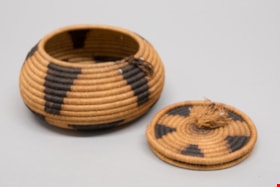
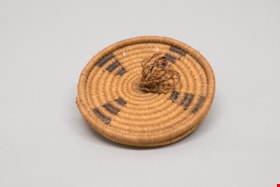
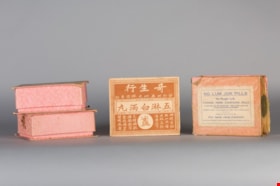
![California quail, [1956] thumbnail](/media/hpo/_Data/_Archives_Images/_Unrestricted/559/559-003.jpg?width=280)
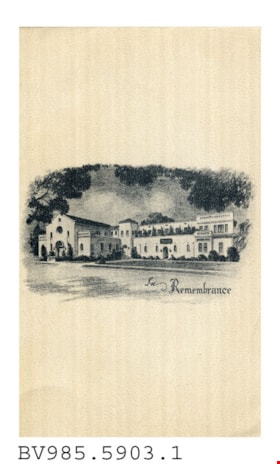
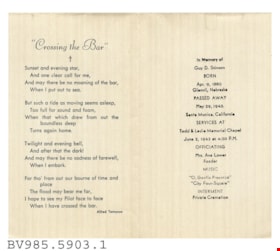
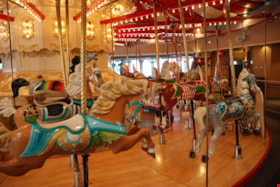
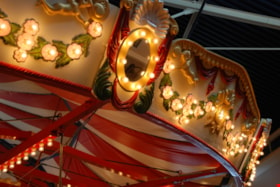
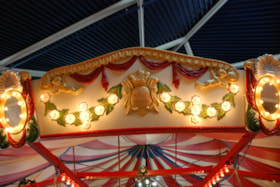
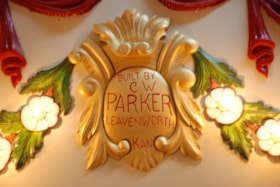
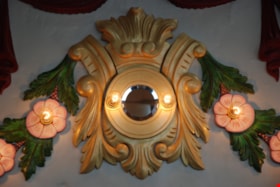
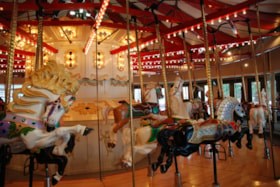
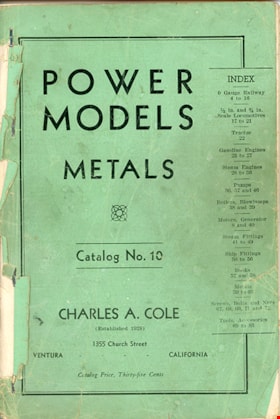
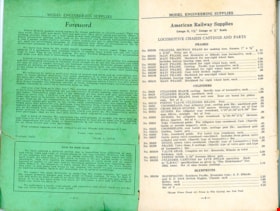
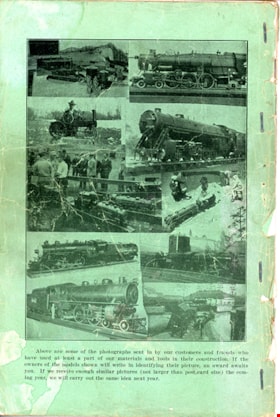
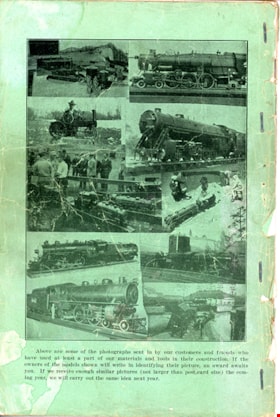
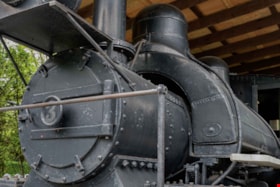
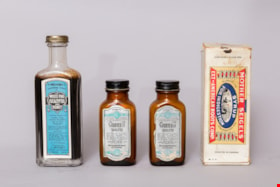
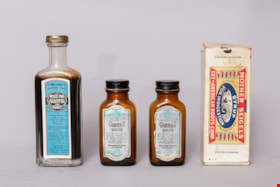
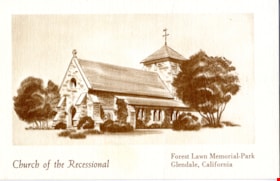

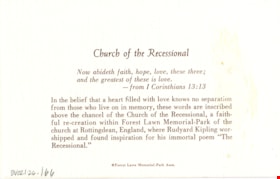
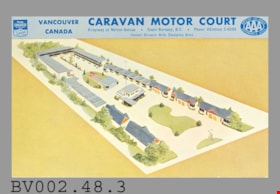
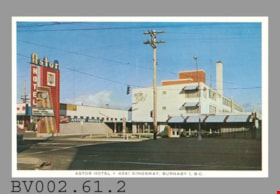
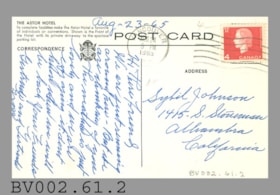
![San Francisco Trip, [between 1935 and 1952] thumbnail](/media/Hpo/_Data/_Archives_Moving_Images/_Unrestricted/562-003-18.jpg?width=280)
